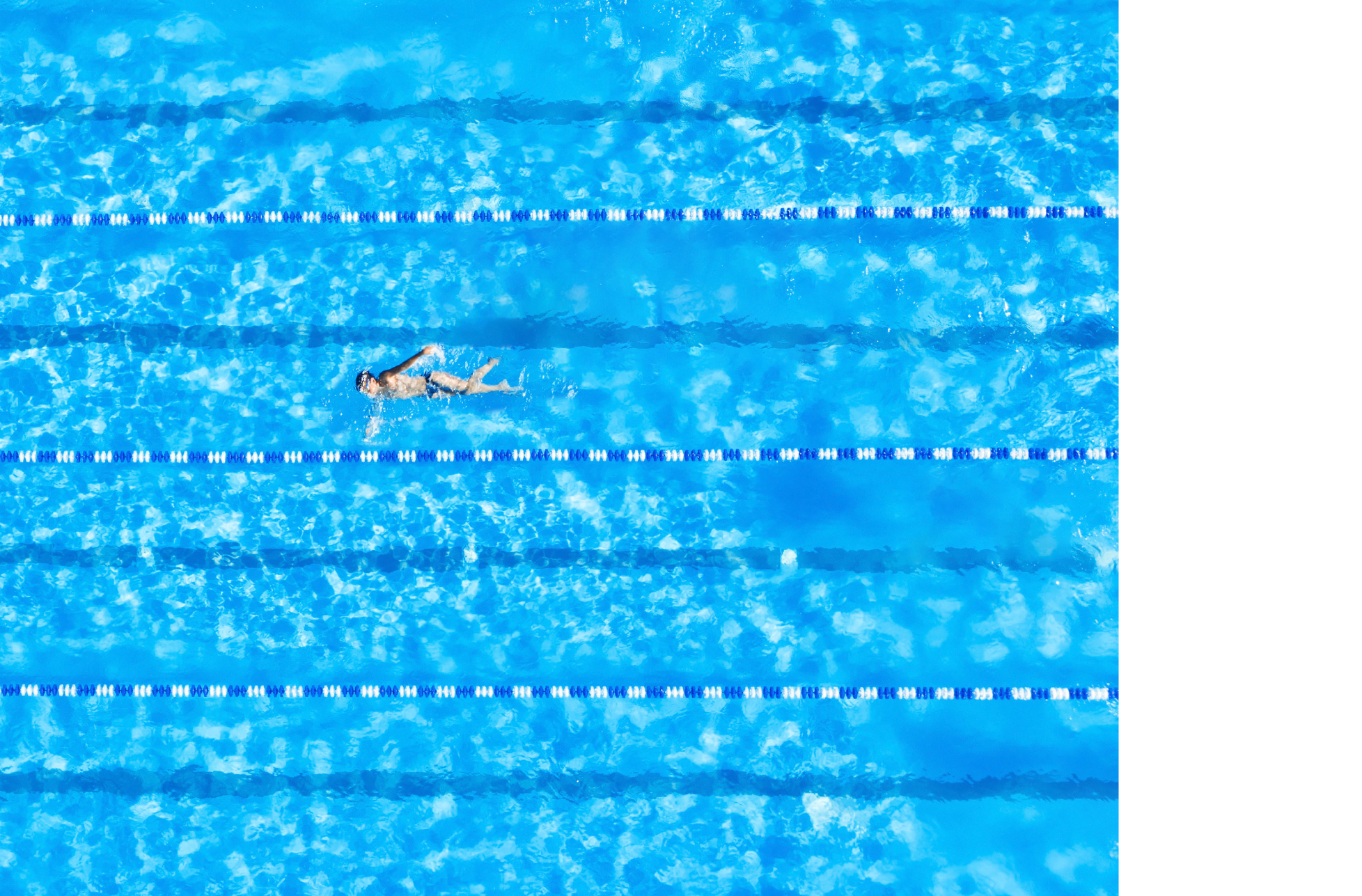As many of you may know, I am training for my next Ironman race, which includes a 2.4-mile open water swim, followed by a 112-mile bike ride and then a full (26.2 mile) marathon. It’s a major time commitment to train in three sports to prepare for the race. To succeed, you really need to be proficient in all three sports, but most triathletes have one area they always need to work on more than the others. For me, my weakness is swimming.
Honestly, I don’t like to swim, because I’m not very good at it. But if I don’t swim more often, I won’t improve. You get the picture.
Recently, I went to the pool in San Francisco to complete a workout on my schedule. (Just getting in the car and driving to the pool felt like an accomplishment in itself!) When I arrived, however, I discovered that the pool had been set up for what is called “long course.” This means the lane lines are set lengthwise instead of across the width of the pool. So, each “trip” across the pool is 50 meters, not 25 yards.
That might not seem like a big difference, but for someone like me who isn’t a proficient swimmer, it is enormous. Swimming long course can throw off your confidence and completely change how you approach a workout. It is a LONG way between walls, with no place to stop and take a break!
To be honest, I almost turned around and went home. But I needed to get the workout in. So, with much trepidation, I forced myself to get in and start swimming. I was certainly uncomfortable to start, but once I got moving and into a rhythm, I found I was able to focus on the work. Instead of looking up and thinking, “Gee the other side is sooo far away,” I just took one stroke at a time.
After a while, it wasn’t as daunting as I thought, and I moved into a reasonable pace. I motored past the older ladies in their flowered swim caps doing their nice, slow doggie paddle. I completed my whole workout and felt stronger and more able than I expected. As I got out of the pool, I had to acknowledge that it wasn’t as bad as I thought it would be—and I actually felt good about the effort. (Not that I will feel good about doing it again!)
So, why should you care?
In this current challenging and pressure-filled environment, most leaders are focusing on the short term—meeting quarterly goals, putting out fires, adjusting to changing priorities from management—even though they know they should also be focused on building for the long-term.
You may feel as daunted by long-term planning as I did staring down that Olympic-sized long course pool. After all, our brains have evolved to value the immediate and short-term future over the longer-term. We have a built-in “distance bias” which causes us to prioritize ideas and decisions that are closer in time (such as reading and responding to the emails in your inbox) over things further in the future (like strategic planning for your team’s future growth).
So yes, thinking about the long term is difficult, even in the best of times. But as leaders, we need to rise to the challenge and make time to plan for the future. Research shows that this is a learnable skill (just like swimming!), and it’s one of the many cognitive skills that leaders can and should learn.
Whatever “swimming the long course” means to you, sometimes you just need to take the plunge and put in the work. You might surprise yourself with the results!
—
Special thanks to my friend and client Sandy Orlando for listening to my swimming story and suggesting the parallels to leadership and long-term planning. And also a BIG thank you to University of San Francisco for switching the pool back to short course lanes this week!


